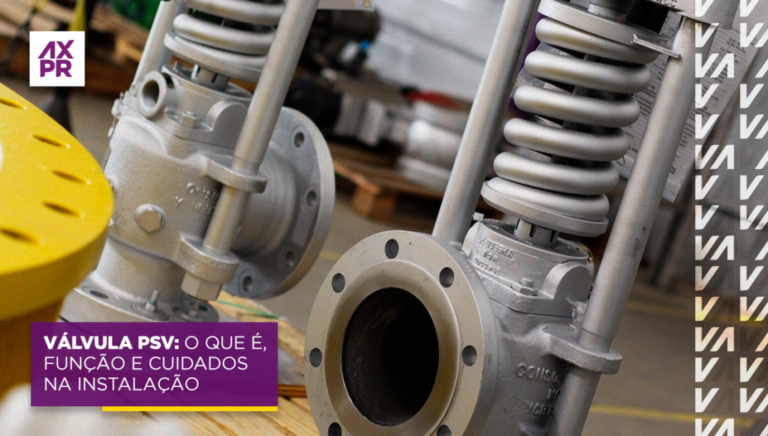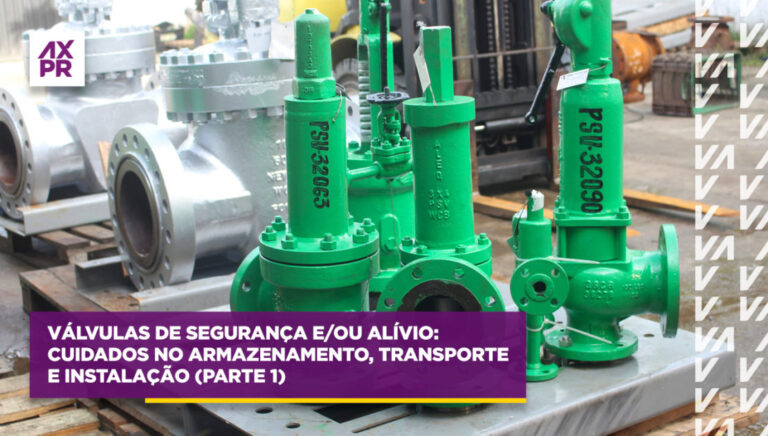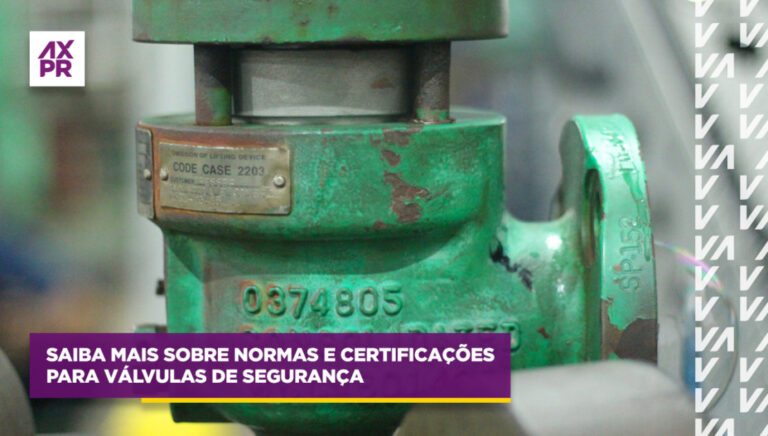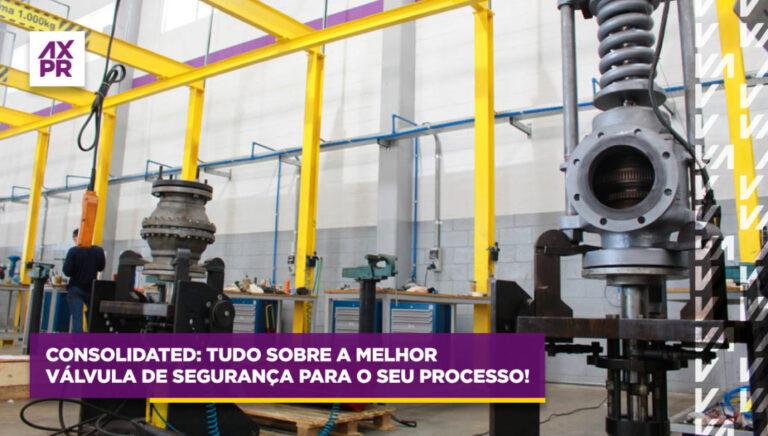Continuing our special series, in this article, we will discuss some design details of discharge piping, both for safety valves protecting boilers and relief valves safeguarding pressure vessels and pipelines.
This piping must be correctly designed, primarily focusing on the safety of people nearby and the proper operation of the valve.
The discharge piping of every safety and relief valve operating with water vapor, non-toxic gases, and hot water above 100°C, discharging directly into the atmosphere (open discharge system), should be as short and direct as possible.
When the discharge is close to walkways, the minimum height of the discharge point should be 3 meters above it, especially if the fluid is vapor.
In addition, valves operating with liquids should have this piping downward and discharging into a channel.
At the lowest point of this piping, immediately after the valve's outlet flange, there should be a drain hole for condensate drainage due to steam leaks through the valve's sealing surfaces or due to rainwater.
In the body of these valves, there is already a mandatory drain hole below the sealing surface of the nozzle.
This drain also prevents the accumulation of dirt, which, along with condensate and/or rainwater, could corrode, freeze, and/or lock the moving parts of the valve, increasing its opening pressure value and/or making it inoperative.
Piping Support
Poorly supported and heavy piping can cause misalignment of the valve's internal components, resulting in erratic opening pressure and leaks during operation.
The region of the valve's body and outlet flange has a wall thickness according to the pressure class of this flange.
This class can be 150 or 300. The region of the inlet flange, where the nozzle is attached, has a greater thickness due to higher pressure and to withstand the reaction forces at the moment of valve opening.
To confirm whether the discharge piping is correctly supported, the user can loosen the bolts fixing the valve's outlet flange to this piping.
In a correctly supported piping, the bolts can be easily removed, while in a piping that has not been correctly supported, those bolts will be stuck due to the weight of the piping exerted on them.
Backpressure in the Piping
The maximum allowable developed backpressure for this piping is another detail that must be analyzed by the installation designer when the valve is discharging the maximum flow capacity stamped on its nameplate. This backpressure should not be greater than the overpressure achieved under relief conditions.
The recommended limit for this discharge piping is always dependent on the value of the overpressure achieved by the valve under relief conditions.
This limit is 10% of the set pressure for a conventional valve with closed and sealed bonnet and cap, or 20% for a conventional valve with an open bonnet (exposed spring).
To minimize or eliminate the backpressure developed during valve discharge, it is recommended that the fluid flow velocity at the discharge point be limited to 70% of the sonic velocity.
This can be achieved by calculating the internal diameter of this piping for sonic velocity and using the next larger diameter pipe.
Attention to Details!
Pipelines that run vertically and then project at an angle of approximately 45° and discharge directly into the atmosphere should be avoided.
This type of installation causes even greater stress (due to weight and leverage forces) on the inlet pipe when compared to a pipe directed vertically upward, parallel to the inlet pipe, and correctly supported.
A piping exiting the valve directly into the atmosphere at a 45° angle also minimizes the reaction force on the body, internal components, and inlet piping of the valve when it is fully open and relieving a compressible fluid.
A vertical support installed on the discharge elbow eliminates the bending moment that can be transmitted to the valve's inlet connection during its opening due to the reaction force caused.
The bending moment exerted on this inlet piping, due to the reaction forces when the valve is open and relieving, may depend on the design and support of the discharge piping.
If the discharge point is cut at 45°, it can reduce the reaction forces at the moment the valve opens, provided that its discharge direction is facing the same direction as the flow in the piping to which the valve's inlet is installed, for example, when protecting a steam or non-toxic gas pipeline (this piping is horizontally oriented).
And when the discharge piping must be installed in the horizontal position, it is always recommended that it has a slope of 1 millimeter for every meter of length.
This slope facilitates the drainage of any condensate that may form in the valve body due to steam leaks.
Additional Observations
In valves with threaded connections, the installation of this piping horizontally should be avoided, as it may cause the valve to unscrew from the vessel when it has to operate with compressible fluids due to the reaction force.
This is even more likely to occur if an elbow is installed at the outlet point of the discharge piping and faces the same direction as the thread that fastens the valve to the vessel.
This occurs because the force exerted by the valve's discharge acts in the opposite direction to the thread.
Developed Backpressure: This is the backpressure produced in this piping only after the valve is fully open. It occurs when the piping is too long and/or has many bends.
It can also occur when the internal diameter of this piping is smaller than the internal diameter of the valve's outlet flange.
It occurs when the fluid is vapor or gas, as well as biphasic fluids, due to their gaseous phase. Safety and relief valves that have higher area ratios between the internal area of the discharge piping and the area of the throat of the nozzle are less likely to experience this type of backpressure.
For example, in a "D" orifice valve (0.110 in²) size 1" x 2", the internal area of the discharge piping is 28.5 times larger than the internal area of the nozzle orifice, whereas in a "T" orifice valve (26 in²) size 8" x 10", the internal area of the discharge piping is only 3.02 times larger than the area of the nozzle throat.
The developed backpressure is specific to each installation.
Overpressure: This is an allowable pressure increase for the safety and relief valve to reach its maximum stroke and, consequently, its maximum flow capacity.
Overpressure is given as a percentage of the set pressure. Its value depends on the causes of the pressure increase and the construction code of the protected equipment.
Open Discharge System: Whenever the valve discharges directly into the atmosphere, such as those discharging compressed air, water vapor, non-toxic gases (e.g., natural gas).
Valves protecting boilers must discharge directly into the atmosphere, without any accessory or block valve in this piping between the safety valve outlet and the atmosphere
Closed Discharge System: Whenever the valve discharge is directed into a collector for fluid reuse or when this fluid cannot be discharged directly into the atmosphere due to environmental reasons. The bonnet and cap (with or without a lever) must be closed and sealed.
Furthermore, you can find more information about the installation of safety and relief valves by researching the ASME Section I code, ASME Section VIII - Division 1, ASME XIII (2021 Edition), and API Std. 520 Part 2 (installation).
The first and second parts of the series on safety and relief valves produced by Axpr in partnership with Artur Cardozo Mathias by clicking on the links.







